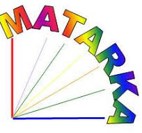Előzetes eredmények városi talajok lebontó hatásfokának vizsgálatáról (GLUSEEN-Projekt, Budapest)
Absztrakt
A „Global Urban Soil Ecology and Education” hálózat előkészítő kutatása második éve folyik – a világ 4 régiójának 5 helyszínén –, Magyarország részvételével. A kutatás célja az ún. „konvergencia hipotézis” tesztelése különböző minőségű/zavartságú városi talajok szerves anyag lebontási hatásfokán keresztül. A konvergencia hipotézis szerint a természetes ökoszisztémák az urbanizáció hatására hasonló irányú változást mutatnak globális szinten. A cél mind tudományos igényű kutatások, mind az érdeklődő lakosság bevonására alkalmas egyszerű, könnyen kivitelezhető, költséghatékony módszerek kidolgozása, tesztelése. A kutatás során 4 élőhelytípust (5–5 ismétlésben) jelöltünk ki: 1) erősen zavart (ruderális), 2) városi gyep, 3) az urbanizáció eredményeként fragmentálódott erdőfoltok és 4) referenciaként szolgáló természetközeli erdők területei. A szervesanyag bomlásának mértékét 2013-ban leásott teafilterekkel vizsgáltuk, amelyeket 4, 6, 10, 12 hónap után gyűjtöttünk vissza. Eredményeink szerint a 6. hónaptól szignifikáns különbség mutatkozott az élőhelytípusok között a lebontási sebességben (F = 11,238; p < 0,0001), ami a városi gyepeken és ruderális élőhelyeken volt a legnagyobb. Ez összhangban van a többi 4 városban kapott eredménnyel, ami alátámasztja a konvergencia hipotézist: a különböző éghajlatú, alapkőzetű talajok kémhatása és humusztartalma az erősen zavart és városi gyep élőhelyek esetén azonos irányú változást mutatnak világszerte.
Hivatkozások
Barrios, E. (2007): Soil biota, ecosystem services and land productivity. – Ecol. Econ. 64 (2): 269–285.
Brunn, M., Spielvogel, S., Sauer, T. & Oelmann, Y. (2014): Temperature and precipitation effects on δ13C profiles in SOM under temperate beech forests. – Geoderma 235-236: 146–153.
Cui, J. & Holden, N. M. (2015): The relationship between soil microbial activity and microbial biomass, soil structure and grassland management. – Soil Till. Res. 146: 32–38.
Davidson, E. A. & Janssens, I. A. (2006): Temperature sensitivity of soil carbon decomposition and feedbacks to climate change. – Nature 440 (9): 165–173.
Dominati, E., Patterson, M. & Mackay, A. (2010): A framework for classifying and quantifying the natural capital and ecosystem services of soils. – Ecol Econ. 69: 1858–1868.
Groffman, P. M., Pouyat, R. V., Cadenasso M. L., Zipperer, W. C., Szlavecz, K., Yesilonis, I. D., Band, L. E. & Brush, G. S. (2006): Land use context and natural soil controls on plant community composition and soil nitrogen and carbon dynamics in urban and rural forests. – Forest Ecol. Manag. 236: 177–192.
Gros, R., Monrozier, L. J., Bartoli, F., Chotte, J. L. & Faivre, P. (2004): Relationships between soil physico-chemcial properties and microbial activity along a restoration chronosequence of alpine grasslands following ski run construction. – Appl. Soil Ecol. 27: 7–22.
Hӓttenschwiler, S., Tiunov, A. V. & Scheu, S. (2005): Biodiversity and litter decomposition in terrestrial ecosystems. – Annu. Rev. Ecol. Evol. S. 36: 191–218.
Hӓttenschwiler, S. (2010): Diversity meets decomposition. – Trends Ecol. Evol. 25 (6): 372–380.
Heimann, M. & Reichstein, M. (2008): Terrestrial ecosystem carbon dynamics and climate feedbacks. – Nature 451 (17): 289–292.
Keuskamp, J. A., Dingemans, B. J. J., Lehtinen, T., Sarneel, J. M. & Hefting, M. M. (2013): Tea Bag Index: a novel approach to collect uniform decomposition data accross ecosystems. – Methods Ecol. Evol. 4 (11): 1070–1075.
Marhan, S., Auber, J. & Poll, C. (2015): Additive effects of earthworms, nitrogen-rich litter and elevated soil temperature on N2O emission and nitrate leaching from an arable soil. – Appl. Soil Ecol. 86: 55–61.
Nielsen, U. N., Ayres, E., Wall, D. H. & Bardgett, R. D. (2011): Soil biodiversity and carbon cycling: a review and synthesis of studies examining diverstiy-function relationships. – Eur. J. Soil Sci. 62: 105–116.
Pouyat, R. V., Russell-Anelli, J., Yesilonis, I. D. & Groffman, P. M. (2003): Soil carbon in urban forest ecosystems. – In: Kimble, J. M., Heath, L. S., Birdsey, R. A. & Lal, R. (Eds.): The Potential of U.S. Forest Soils to Sequester Carbon and Mitigate the Greenhouse Effect. CRC Press, Boca Raton, pp. 347–362.
Pouyat, R. V., Belt, K., Pataki, D., Groffman, P. M., Hom, J. & Band, L. (2007): Urban land use change effects on biogeochemical cycles. – In: Canadell, J. G., Pataki, D. E., Pitelka & L. F. (Eds.): Terrestrial Ecosystems in a Changing World. Global Change, the IGBP Series. Springer, Berlin-Heidelberg-New York, pp. 45–58.
Pouyat, R. V., Yesilonis, I. D., Szlavecz, K., Csuzdi, C., Hornung, E., Korsós, Z., Russell-Anelli, J. & Giorgio, V. (2008): Response of forest soil properties to urbanization gradients in three metropolitan areas. – Landsc. Ecol. 23: 1187–1203.
R Core Team. (2013): R: a language and environment for statistical computing. R Foundation for Statistical Computing, Vienna. http://www.R-project.org/
Salamanca, E. F., Kaneko, N. & Katagiri, S. (2003): Rainfall manipulation effects on litter decomposition and the microbial biomass of the forest floor. – Appl. Soil Ecol. 22: 271–281.
Schimel, J. P. & Weintraub, M. N. (2003): The implications of exoenzyme activity on microbial carbon and nitrogen limitation in soil:a theoretical model. – Soil Biol. Biochem.35: 549–563.
Setia, R., Gottschalk, P., Smith, P., Marschner, P., Baldock, J., Setia, D. & Smith J. (2013): Soil salinity decreases global soil organic carbon stocks. – Sci. Total Environ. 465: 267–272.
Stefanovits, P., Filep, Gy. & Füleky, Gy. (szerk.) (1999): Talajtan. – Mezőgazda Kiadó, Budapest, 470 pp.
Vance, E. D. & Chapin III, F. S. (2001): Substrate limitations to microbial activity in taiga forest floors. – Soil Biol. Biochem. 33: 173–188.
Vanhala, P., Karhu, K., Tuomi, M., Björklöf, K., Fritze, H. & Liski, J. (2008): Temperature sensitivity of soil organic matter decomposition in southern and northern areas of the boreal forest zone. – Soil Biol. Biochem. 40: 1758–1764.
United Nations (2014): 2014 Revision of the World Urbanization Prospects (http://esa.un.org/unpd/ wup/) Utolsó hozzáférés: 2014. 12. 30.
Zwoliński, J. (1994): Rates of organic matter decomposition in forests polluted with heavy metals. – Ecol. Eng. 3: 17–26.






